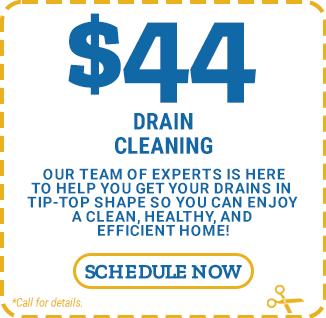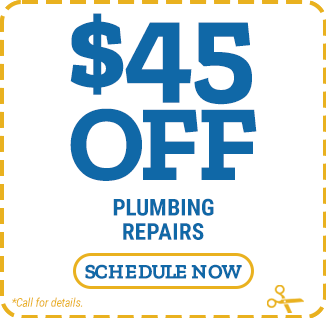Master the Art: How to Clear a Clogged Drain Like a Pro
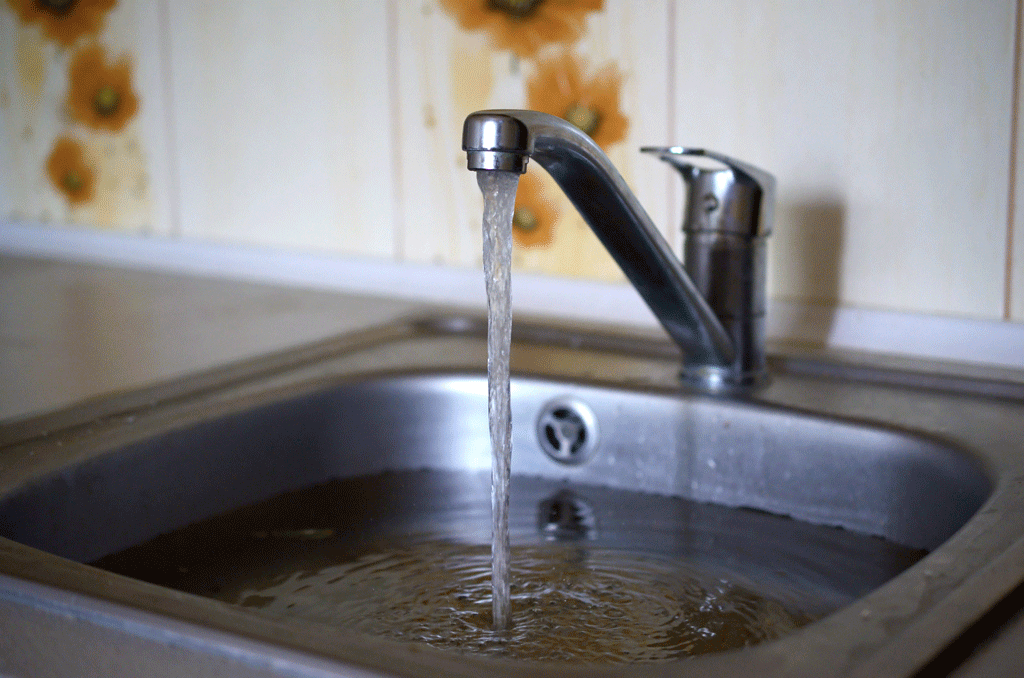
Have you ever been caught off-guard by a stubbornly clogged drain?
It’s a common plight that many homeowners face. The water refuses to go down, and you’re left with a mess. But what if there was a foolproof way to tackle this issue, ensuring it never disrupts your day again?
In this article, we’ll journey through the intricate world of drain maintenance.
We’ll arm you with a wealth of knowledge, from understanding the root causes of clogs to how to clear a clogged drain in your home. By the end, you’ll be well-equipped to handle any drain-related challenge that comes your way.
The Anatomy of a Clogged Drain
Understanding the Culprits
Every clog has a story. Most drains get blocked due to a combination of hair, soap residues, food remnants, and mineral build-ups.
Over time, these elements intertwine, forming a stubborn blockage that impedes water flow.
Diving deeper into the intricacies of these blockages, when you ponder on how to clear a clogged drain, it’s crucial to first pinpoint what’s causing the obstruction. Hair, for instance, is a frequent offender in bathroom drains.
As strands flow down, they often mingle with soap residues, creating a net-like structure that ensnares other debris. This becomes particularly problematic in showers, where the mix of hair and soap can lead to significant obstructions.
In the realm of kitchen sinks, the narrative shifts. Here, food remnants are the primary antagonist.
Consider the grease from your pans or minuscule food particles that bypass the trash.
Over time, these elements accumulate, adhering to the pipe walls, especially when mixed with soap residues.
Regular cleaning can deter such build-ups, ensuring a consistent water flow, which is essential when figuring out how to clear a clogged drain.
Then there’s the challenge of mineral build-ups, often a byproduct of hard water. These minerals latch onto the inner walls of the pipes, constricting the water’s pathway. In regions plagued by hard water, drains clogged due to these mineral deposits are commonplace.
Standing water in your sink or tub can be a telltale sign of such obstructions, highlighting the importance of knowing how to clear a clogged drain with standing water.
While each of these elements can be a menace on their own, the real headache emerges when they amalgamate.
A drain choked with hair, soap, food, and minerals is a formidable challenge, underscoring the need for preventive care and routine upkeep.
The Role of Hard Water
Hard water, rich in minerals, can exacerbate clogging.
The minerals in hard water, primarily calcium and magnesium, can combine with soap to form a sticky substance called soap scum. This soap scum clings to pipes, creating a layer that traps other debris, making it a significant contributor to blockages.
When considering how to clear a clogged drain, understanding the impact of hard water is crucial. In areas where hard water is prevalent, homeowners often find themselves grappling with frequent drain issues. The continuous flow of mineral-rich water leads to the gradual buildup of deposits on the inner walls of the pipes.
Over time, these deposits narrow the passage, restricting the flow of water and making the drain more susceptible to clogs.
Furthermore, the challenge isn’t just limited to soap scum.
Hard water can also react with various cleaning agents and detergents, reducing their effectiveness. This means that even if you’re diligent about how to clear a clogged drain, the presence of hard water can make your efforts less effective.
The minerals interfere with the cleaning action, making it harder to break down and flush away the debris.
For those with bathtubs or showers, hard water presents another challenge. The minerals can combine with organic materials, like hair, leading to even more stubborn blockages. This scenario emphasizes the importance of strategies tailored to how to clear a clogged drain in your shower or how to clear a clogged drain in your bathroom.
While hard water might seem like just an inconvenience when it comes to lathering soap or leaving spots on dishes, its role in drain clogging is significant.
Addressing the challenges posed by hard water is essential for maintaining clear, free-flowing drains and ensuring a hassle-free plumbing system.
Also read: Your Key to a Problem Free Home | A Guide to Drain Cleaning
How to Clear a Clogged Drain: Tested and Proven Solution
The Plunger Method
A good old-fashioned plunger can work wonders.
By creating a vacuum, it can dislodge minor blockages, restoring water flow. This simple tool, often overlooked, is a staple in most households and can be the first line of defense when figuring out how to clear a clogged drain.
The principle behind the plunger is straightforward.
When you push down on the plunger, it forces air out, and when you pull it back, it creates a suction effect. This push-pull action can jostle the obstruction, breaking it apart and allowing it to move down the drain.
It’s a method that has stood the test of time and remains one of the most eco-friendly and chemical-free ways to address blockages.
However, the effectiveness of the plunger isn’t just limited to sinks. When you’re faced with issues in the bathroom, understanding how to clear a clogged drain in your shower or how to clear a clogged drain in your bathroom becomes crucial.
Here too, the plunger can be a valuable ally. The trick lies in ensuring a good seal and applying constant force to create the necessary vacuum.
But, as with all methods, there are some nuances to consider. For instance, if you’re dealing with a double sink, it’s essential to block the other drain to ensure the vacuum is effective.
Similarly, if you’re trying to clear a clogged drain with standing water, removing some of the excess water can make the plunging more effective.
Natural Remedies
Before resorting to chemicals, consider eco-friendly solutions.
A mixture of baking soda followed by vinegar can break down many clogs, and boiling water can melt greasy build-ups. These natural methods not only protect the environment but also ensure the longevity of your pipes by avoiding the harshness of commercial drain cleaners.
When pondering how to clear a clogged drain, many homeowners are now leaning towards green solutions.
The combination of baking soda and vinegar, for instance, creates a fizzy reaction that can dislodge blockages.
This reaction can be particularly effective for those wondering how to clear a clogged drain that’s been affected by soap residues or organic materials. The effervescence can penetrate the clog, breaking it into smaller, more manageable pieces that can be easily flushed away.
Boiling water, on the other hand, is a simple yet effective remedy, especially for kitchen sinks. Grease and oil are common culprits behind kitchen drain blockages. Over time, these substances can solidify, creating a barrier that impedes water flow.
Pouring boiling water can melt these greasy obstructions, restoring the drain’s functionality. This method is especially relevant for those searching for ways on how to clear a clogged shower drain or how to clear a clogged bathtub drain where soap and shampoo residues often mix with oils from our skin.
Furthermore, these natural remedies are not just effective but also cost-efficient.
Most households already have baking soda and vinegar in their pantries, making it a readily available solution without the need for a store run.
Store-Bought Drain Cleaners:
While effective, store-bought drain cleaners should be used as a last resort. They contain harsh chemicals that can damage pipes and harm the environment.
When faced with the challenge of how to clear a clogged drain, many individuals might be tempted to grab the most potent solution available on the store shelves. However, it’s essential to weigh the pros and cons of such products.
These commercial drain cleaners work by producing a chemical reaction that generates heat. This heat can break down the organic materials causing the blockage.
For those dealing with stubborn obstructions, especially when trying to figure out how to clear a clogged drain or how to clear a clogged bathtub drain, the allure of a quick fix can be strong. But it’s crucial to remember that the same chemicals that make these products effective can also have detrimental effects.
For one, the chemicals can corrode older pipes, leading to leaks and further plumbing issues down the line.
Moreover, if not used correctly, there’s a risk of chemical burns or fumes that can be harmful if inhaled. This is especially concerning for households with children or pets.
Furthermore, once these chemicals go down the drain, they can end up in waterways, posing risks to aquatic life and the broader ecosystem.
For those conscious about their environmental footprint, it’s worth exploring how to clear a clogged drain using more eco-friendly methods before resorting to these chemical solutions.
While store-bought drain cleaners offer a promise of effectiveness, they come with a set of risks that shouldn’t be overlooked. It’s always advisable to start with milder, natural solutions and only turn to these potent cleaners when all else fails, ensuring that you’re using them safely and responsibly.
Also read: Top Reasons To Schedule A Drain Cleaning Service

Photo By BigBlueStudio at Shutterstock
When to Call in the Professionals
Recognizing Stubborn Clogs
If DIY methods fail, it might be time to seek expert help. Persistent clogs can indicate deeper issues, like tree root intrusions or major blockages.
When you’ve tried every trick in the book on how to clear a clogged drain and still face recurring problems, it’s a sign that the issue might be more complex than it appears on the surface.
Tree root intrusions are a common culprit in older homes. As trees grow, their roots search for water sources, and unfortunately, they often find their way into underground pipes.
These roots can cause significant blockages, and while you might get temporary relief using regular methods, the problem is likely to persist.
For those wondering how to clear a clogged drain or how to clear a clogged bathtub drain in homes surrounded by large trees, this could be an area of concern.
Major blockages can also arise from a buildup of non-biodegradable materials, like wipes, sanitary products, or even toys that accidentally find their way down the drain. These blockages can be challenging to dislodge using conventional DIY methods.
Moreover, if you’ve tried natural remedies or even store-bought solutions and still find water pooling in your sink or tub, it’s a clear indication of a deeper issue.
This is especially true if you’ve also noticed unusual sounds, like gurgling, coming from your drains or if there’s an unpleasant odor. Such symptoms can hint at significant blockages or even potential damage to the piping system.
Recognizing when a clog is beyond DIY solutions is crucial.
While it’s always tempting to solve problems on your own, there are times when calling in the experts is the best course of action. They have the tools, expertise, and experience to diagnose and address the root cause, ensuring that your plumbing system remains in optimal condition.
The Tools of the Trade
Professional plumbers come armed with advanced tools like drain snakes, hydro jets, and inspection cameras, ensuring they can tackle even the most challenging clogs.
When you’re trying to figure out how to clear a clogged drain, it’s essential to understand the arsenal at a professional’s disposal and how these tools can make a difference.
Drain snakes, also known as augers, are flexible tools that can be manually or mechanically rotated to dislodge blockages deep within the drain.
They’re especially effective when you’re dealing with issues like how to clear a clogged shower drain or how to clear a clogged bathtub drain where hair and soap scum often intertwine to create stubborn obstructions.
The snake’s coiled design allows it to navigate the twists and turns of the piping system, reaching and breaking apart blockages that are often out of reach for conventional methods.
Hydro jets, on the other hand, use the power of high-pressure water to blast away obstructions. This method is particularly effective for clearing out greasy build-ups and mineral deposits.
If you’ve ever wondered how to clear a clogged drain that’s been affected by years of neglect, hydro jetting offers a solution that not only clears the current blockage but also cleans the walls of the pipes, preventing future issues.
Lastly, inspection cameras provide a clear view of what’s happening inside the pipes.
These tiny, waterproof cameras are fed into the drain, allowing plumbers to pinpoint the exact location and nature of the clog. This real-time visual feedback ensures that the right strategy is employed, minimizing guesswork and maximizing efficiency.
While DIY methods have their place, there’s no denying the effectiveness of professional tools.
When faced with persistent or recurring drain issues, it’s comforting to know that experts have a range of advanced tools at their disposal, ensuring that your plumbing system is restored to its optimal state.
Preventive Measures: The Key to Clog-Free Drains
Regular Maintenance
A monthly cleaning routine can work wonders. Pouring a mixture of hot water, baking soda, and vinegar can prevent debris build-up, ensuring that you don’t frequently find yourself wondering how to clear a clogged drain.
Regular maintenance is the key to a hassle-free plumbing system, and with a few simple steps, you can ensure the longevity and efficiency of your drains.
The combination of hot water, baking soda, and vinegar acts as a powerful cleaning agent.
When you pour baking soda into the drain, followed by vinegar, a fizzy reaction occurs. This effervescence helps in breaking down the organic materials and soap residues that often lead to blockages.
If you’ve been battling issues like how to clear a clogged shower drain or how to clear a clogged drain in your bathtub, this monthly routine can significantly reduce the frequency of such problems.
Moreover, this mixture is not just effective but also eco-friendly. Unlike store-bought drain cleaners, which often contain harsh chemicals, this natural solution is gentle on the environment and your pipes.
It’s especially beneficial for those who are conscious about their environmental footprint and are looking for sustainable ways on how to clear a clogged drain.
In addition to this monthly routine, it’s also advisable to be mindful of what goes down the drain.
Avoid disposing of greasy substances in the kitchen sink and consider using drain strainers to catch larger debris. These simple preventive measures can go a long way in ensuring that your drains remain clear.
Invest in Drain Guards
Simple mesh guards can catch hair, food particles, and other debris, preventing them from entering your drains. These unassuming tools, often overlooked, can be a game-changer when it comes to how to clear a clogged drain.
By acting as the first line of defense, drain guards can significantly reduce the frequency and severity of blockages, ensuring smoother water flow and fewer plumbing headaches.
Hair is one of the most common culprits behind bathroom drain clogs. Every time you shower or wash your hair over a sink, strands can flow down, eventually leading to blockages.
For those who often find themselves grappling with how to clear a clogged drain in your shower, investing in a drain guard can be a proactive solution. The mesh design effectively traps hair, allowing you to dispose of it appropriately, rather than letting it go down the drain.
In the kitchen, food remnants are the primary concern.
Even with the most meticulous washing, tiny food particles can escape, accumulating in the pipes over time. A drain guard can catch these particles, making it easier to clean a clogged drain and maintain optimal water flow.
It’s a simple yet effective tool that can make a world of difference in preventing greasy build-ups and stubborn blockages.
Moreover, drain guards are not just functional but also cost-effective.
For a minimal investment, you can protect your plumbing system, potentially saving on future repair costs. They are easy to install, require minimal maintenance, and can be cleaned and reused multiple times.
While there are numerous methods and tools available to tackle clogged drains, prevention is always better than cure. Investing in drain guards offers a simple, effective, and eco-friendly way to keep blockages at bay, ensuring that your drains remain clear and functional for years to come.
Be Mindful of What Goes Down
Avoid pouring grease or oil down the drain, and be cautious about the food remnants that go into kitchen sinks.
Being conscious of what you allow into your drainage system is a pivotal step when considering how to clear a clogged drain. By adopting mindful habits, you can prevent many common blockages, ensuring a hassle-free plumbing experience.
Grease and oil, while seemingly harmless in their liquid state, can solidify once they cool down.
When poured down the drain, they adhere to the pipe walls, creating a sticky layer that traps other debris. Over time, this layer thickens, narrowing the passage and impeding water flow. If you often wonder how to clear a clogged drain in your kitchen, being vigilant about grease disposal can make a significant difference.
Food remnants, on the other hand, can be just as problematic.
Even small particles, when accumulated over time, can form substantial blockages. It’s especially crucial for those without garbage disposals to be extra cautious. Using a drain guard, as previously mentioned, can be an effective way to catch these remnants, ensuring they don’t contribute to potential blockages.
Moreover, being mindful extends beyond just the kitchen. In bathrooms, products like hair, soap residues, and even certain types of bath salts or oils can lead to obstructions. Understanding how to clear a clogged drain in your bathtub or shower often starts with being selective about the products you use and ensuring they’re drain-friendly.
While there are numerous tools and methods to address a clogged drain, prevention remains the most effective strategy.
By being mindful of what goes down your drains and adopting proactive habits, you can ensure the longevity and efficiency of your plumbing system, saving both time and potential repair costs.
Cost Implications: What to Expect
Clearing a clogged drain can be as cheap as using household items or as expensive as hiring professionals.
It’s crucial to understand the potential costs to make informed decisions. When faced with the challenge of how to clear a clogged drain, homeowners often weigh the options based on their budget, the severity of the clog, and the tools or methods required.
Starting with DIY methods, using household items like baking soda, vinegar, and hot water can be an economical solution. These ingredients are typically found in most homes, making them a go-to option for minor blockages.
For those exploring how to clear a clogged drain with standing water or how to clear a clogged drain affected by soap residues, these natural remedies can offer a cost-effective solution without the need for store-bought products.
However, for more stubborn clogs, especially those related to how to clear a clogged shower drain or how to clear a clogged drain in your bathtub, store-bought drain cleaners might be considered.
While these are more potent and can address tougher blockages, they come at a higher price point and carry potential risks for the environment and your pipes.
On the higher end of the cost spectrum, hiring professionals becomes necessary when DIY methods fail.
Plumbers come equipped with advanced tools like drain snakes, hydro jets, and inspection cameras, ensuring a thorough job. While this option is undoubtedly more expensive, it offers the assurance of a comprehensive solution, especially for complex issues like tree root intrusions.
The cost implications of clearing a clogged drain vary widely based on the chosen method. It’s essential to assess the situation, understand the potential costs, and make decisions that align with both the severity of the clog and your budget.
Being informed can save homeowners from unnecessary expenses while ensuring the best care for their plumbing systems.
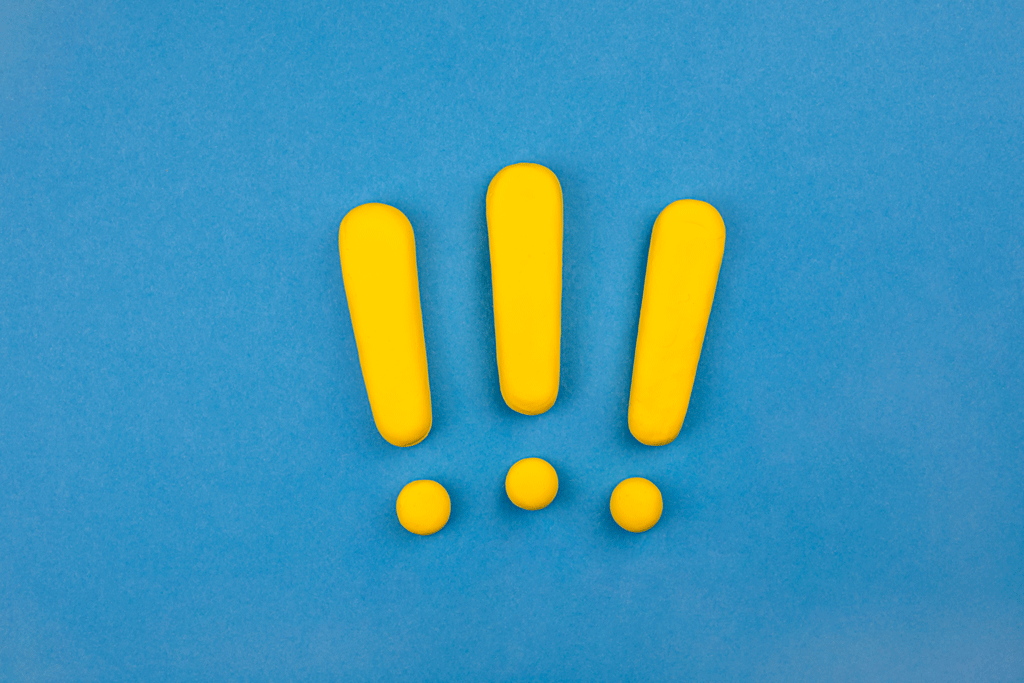
Photo By SaskiaAcht at Shutterstock
The Importance of Regular Inspections
Spotting Early Warning Signs
Regular inspections can help identify potential issues before they escalate. Slow draining water, recurring clogs, and foul odors can all indicate underlying problems.
Being proactive and attentive to these early warning signs is crucial when considering how to clear a clogged drain effectively and efficiently.
Slow draining water is often the first sign that something is amiss. If you notice that water takes longer than usual to drain from your sink, bathtub, or shower, it’s a clear indication that a blockage is forming.
Addressing this early on can prevent a full-blown obstruction, saving you time and potential repair costs. For those who have faced challenges like how to clear a clogged shower drain or how to clear a clogged drain, regular checks can be a preventive measure.
Recurring clogs, on the other hand, can be a symptom of a more persistent issue. If you find yourself repeatedly dealing with blockages, even after clearing them, it might indicate a deeper problem.
This could range from tree root intrusions to significant build-ups that DIY methods can’t fully address. In such cases, seeking professional help early can prevent more extensive damage.
Foul odors emanating from your drains are another red flag.
These unpleasant smells can be a result of food remnants, organic decay, or even sewer gasses. If you’re trying to figure out how to clear a clogged drain that emits a bad odor, it’s essential to address the root cause rather than masking the smell.
Spotting early warning signs and acting on them promptly is the key to maintaining a hassle-free drainage system.
Regular inspections, combined with a proactive approach, can ensure that minor issues don’t escalate into major problems, ensuring the longevity and efficiency of your plumbing system.
Advanced Techniques and Solutions for Drainage Dilemmas
The Science Behind Drain Clogging
To truly grasp how to clear a clogged drain, it’s beneficial to understand the science behind the clogging process.
Drains, over time, are subjected to various materials that, when combined with water, can form semi-solid masses. Factors like water temperature, pH levels, and the type of debris play a role in how quickly a blockage can form.
By understanding the chemistry and physics of these blockages, homeowners can make informed decisions on how to clear a clogged drain and prevent future issues.
Modern Drainage Materials and Their Impact
The materials used in modern plumbing have evolved, impacting how to clear a clogged drain.
From PVC to copper and galvanized steel, each material has its own set of advantages and challenges.
For instance, while PVC pipes are resistant to rust, they can be more susceptible to certain chemical reactions. Being aware of the type of plumbing in your home can guide you in selecting the best methods and products when figuring out how to clear a clogged drain.
The Digital Revolution in Drainage Solutions
The digital age has brought about innovations that are reshaping how to clear a clogged drain. From smart drain monitors that send real-time data to your smartphone to drainage systems integrated with home automation, technology is offering proactive solutions.
These tools can predict and prevent potential clogs, reducing the frequency with which homeowners need to address how to clear a clogged drain.
The Environmental Impact of Drain Blockages
Beyond the immediate inconvenience, there’s an environmental perspective to how to clear a clogged drain.
Blocked drains can lead to wastewater overflows, potentially contaminating natural water sources. Moreover, the chemicals often used in clearing drains can harm aquatic ecosystems.
By adopting eco-friendly practices and products, homeowners can ensure they’re addressing how to clear a clogged drain without compromising the environment.
Community and Neighborhood Initiatives for Drain Health
Collective community efforts can play a pivotal role in understanding and implementing strategies on how to clear a clogged drain.
Neighborhood initiatives can focus on educating residents, organizing regular drain clean-up drives, and even pooling resources for advanced drainage solutions. Such collective efforts not only address immediate issues but also foster a sense of community responsibility.
Benefits of Timely Interventions:
Addressing issues early can save money in the long run, preventing costly repairs and replacements.
When it comes to figuring out how to clear a clogged drain, timely interventions can make a world of difference.
Here are some of the key benefits of acting promptly:
Cost Savings: Tackling blockages early on can prevent more extensive damage to your plumbing system. This means avoiding the high costs associated with major repairs or pipe replacements.
Extended Lifespan of Plumbing: Regular maintenance and addressing issues as they arise can extend the life of your plumbing system. This means fewer worries about how to clear a clogged drain in your shower or how to clear a clogged drain in your bathtub in the long run.
Improved Water Flow: Addressing minor blockages promptly ensures consistent and efficient water flow throughout your home, enhancing the overall functionality of your plumbing system.
Prevention of Foul Odors: Timely interventions can prevent the buildup of organic material in the drains, which can lead to unpleasant smells. This is especially relevant for those looking to learn how to clear a clogged drain that’s been affected by food remnants or organic decay.
Environmental Benefits: By addressing issues early, homeowners can avoid resorting to harsh chemical solutions that can harm the environment. Opting for eco-friendly solutions becomes more feasible with timely interventions.
Health Benefits: A well-maintained drainage system reduces the risk of mold and bacteria growth, ensuring a healthier living environment for you and your family.
Peace of Mind: Knowing that your plumbing system is in top-notch condition offers peace of mind. Regular checks and timely interventions mean fewer unexpected issues and disruptions.

Photo By enterlinedesign at Shutterstock
Top 5 Expert Tips on Clearing Clogged Drains
Boil the Clog Away
One of the simplest methods to tackle a mildly clogged drain is by pouring boiling water.
The high temperature of the water can break down the clog, allowing it to pass through. This method is particularly effective for slow drains but might not be as effective for fully blocked ones.
Try a Clog-Busting Household Cleaner
Grease build-up in kitchen sinks can often be the culprit behind clogs. Dish soap, designed to cut through grease, can be a game-changer.
Pouring a few tablespoons of dish soap and letting it sit can break down the grease. Following up with boiling water can further clear the clog.
Take the Plunge
If the above methods don’t yield results, a plunger might be the answer.
Using the appropriate plunger (sink or toilet), you can create a vacuum to dislodge the blockage. Ensure you’re using the right technique for maximum effectiveness.
Snake the Drain
For more stubborn clogs, snaking the drain might be necessary. Using a plastic drain snake for sinks or a closet auger for toilets can help in reaching deeper blockages and clearing them.
Call a Professional
If all DIY methods fail, it’s time to call in the experts. Professionals come equipped with advanced tools and expertise to handle even the most challenging clogs.
Plus, they can provide insights into preventing future blockages.
How to clear a clogged drain in your home should never be a stressful affair. Call the professionals to save time and get effective service.
Benjamin Franklin Plumbing: Your Drain Clearing Partner in Mohave County, Az
In the heart of Mohave County, AZ, Benjamin Franklin Plumbing stands as a beacon of reliability and excellence.
With a reputation built on trust and expertise, they have become the first choice for many homeowners facing plumbing challenges. Their seasoned team, equipped with the latest tools and knowledge, offers unparalleled services, ensuring your drains remain clog-free and function optimally.
Whether you’re nestled in the scenic landscapes of Kingman, AZ, enjoying the vibrant life of Bullhead City, AZ, relishing the tranquility of Golden Valley, AZ, or residing in the picturesque Mohave Valley, AZ, Benjamin Franklin Plumbing is just a call away.
Their widespread presence ensures that no matter where you are in Mohave County, top-tier plumbing solutions are within your reach.
Clogged drains can be more than just a minor inconvenience; they can disrupt your daily routine and even lead to more significant plumbing issues if not addressed promptly.
But with Benjamin Franklin Plumbing by your side, you have a partner who understands the intricacies of plumbing systems and is committed to delivering swift and efficient solutions.
Don’t let clogged drains throw a wrench in your day or compromise the comfort of your home.
How to clear a clogged drain in your home should never be a stressful affair.
Reach out to them at Benjamin Franklin Plumbing or dial # 928-224-8669 for top-tier plumbing services tailored to your needs. They’re not just service providers; they’re your plumbing partners, ensuring a smooth and hassle-free experience.
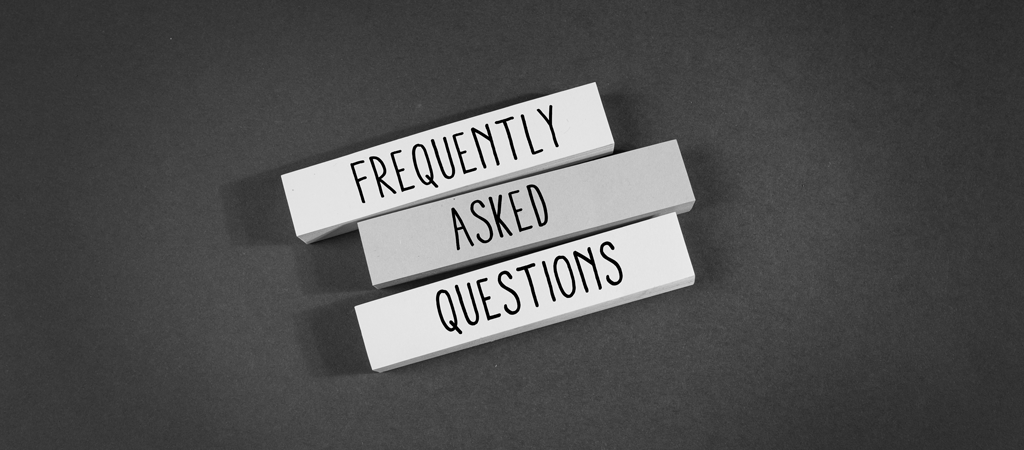
Photo By Jievani at Shutterstock
FAQs
1. What are the most common causes of clogged drains?
The most common culprits include hair, soap scum, food particles, grease, oil, and mineral build-ups. Over time, these elements can combine and form blockages that impede water flow.
2. Can I use boiling water to clear a clog?
Yes, pouring boiling water down the drain can help dissolve some types of clogs, especially those caused by grease or soap build-up. However, it may not be effective for more stubborn blockages.
3. Are store-bought drain cleaners safe for all pipes?
While many drain cleaners claim to be safe for all pipe types, they often contain harsh chemicals that can damage older pipes or septic systems. It’s always best to read the label and consult with a professional if unsure.
4. How often should I clean my drains to prevent clogs?
Regular maintenance, such as a monthly cleaning with a mixture of baking soda and vinegar, can help prevent debris build-up and potential clogs.
5. What’s the difference between a standard clog and a sewer line blockage?
A standard clog usually affects a single fixture, like a sink or bathtub. A sewer line blockage, on the other hand, can affect multiple fixtures and may result in wastewater backing up into the home.
6. Can tree roots cause drain clogs?
Yes, tree roots can infiltrate sewer lines, causing significant blockages. This often requires professional intervention to address.
7. How can I prevent hair from clogging my shower drain?
Using a drain guard or strainer can effectively catch hair and prevent it from going down the drain.
8. Are there eco-friendly ways to clear a clogged drain?
Absolutely! Natural remedies like a mixture of baking soda and vinegar, followed by hot water, can be effective in breaking down many clogs without the use of chemicals.
9. When should I call a professional plumber for a clogged drain?
If you’ve tried multiple DIY methods and the clog persists, or if you notice recurring clogs, it’s a good idea to seek professional help.
10. Can regular plumbing inspections help prevent clogs?
Yes, regular inspections can identify potential issues before they escalate, ensuring your drains remain clear and functional.
See our most recent blog on this topic here.
Check out our reviews here













